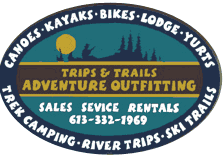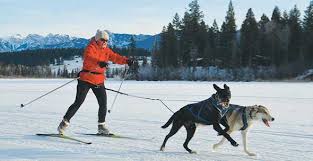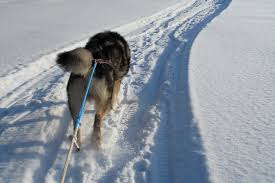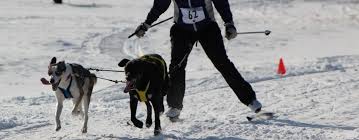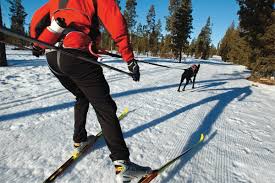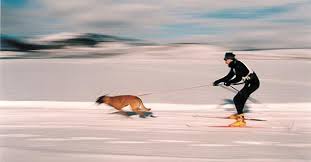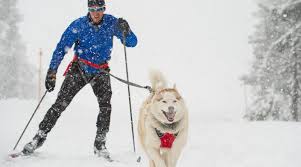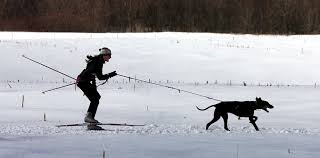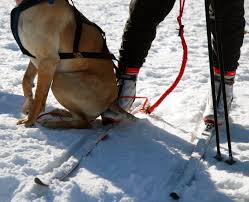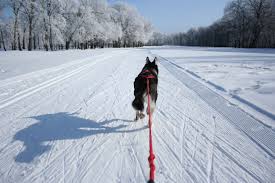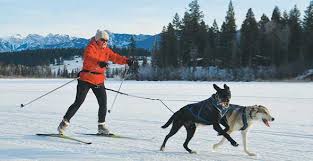Skijoring
A great way to spend time with your dog this winter.
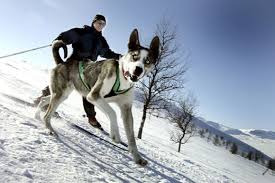
You had a great summer, with lots of activities that you and your dog were able to share, and fall was just a cooler extension of the fun. But now winter is beginning to blow its first frosty breaths, threatening to spoil the groove you and you dog have going.
The high energy activities don’t have to end with the first snowfall, however. If you live close to an area where you can cross country ski, and your dog is physically capable of spending long amounts of time in the snow, then you may have just found your new winter activity: Skijoring!
What is Skijoring?
Skijoring, which translates to ski driving in Norwegian, is a combination of cross country skiing and dog sledding. The dog is outfitted with a dog sledding harness, which is attached by rope or towline to a skijoring harness worn by the human. While the human powers him or herself using skis and poles, the dog also pulls the human. This activity can be done with one dog or a team of dogs. As long as your dog weighs at least 35 pounds and has the energy, stamina and willingness to take part, all you will need is some basic training to get started.
And you don’t have to be an expert skier to skijor, and your dog doesn’t have to be a Northern breed dog like a Husky or Malamute. She doesn’t even have to be a big dog, because you will be providing some of the power of momentum. Your dog just needs to be healthy, full of energy, and motivated to run for the simple joy of running. (As with any sport or high energy activity, you should take your dog for a health check before beginning a new sport or routine.)
Which Dogs are Best for Skijoring?
Any dog that loves to run and meets the minimum weight requirement is a good candidate for skijoring. While small dogs are not necessarily excluded from recreational skijoring, they are not often seen participating because they are not able to add much strength or speed. But if you feel that your small dog would have fun skijoring with you, what’s the harm in letting him pretend to pull you with all of his strength?
The breeds that do tend to be seen participating in this sport in greater numbers are the Northern breeds, those with heavy hair coats like Canadian Eskimos, Huskies, Malamutes, Samoyeds and Chows. But other breeds are well suited for this sport as well, pulling dogs such as American Bulldogs, mastiffs, American bull terriers and Staffordshire terriers, and high energy and fast running breeds like greyhounds, Labrador and Golden retrievers, German shepherds and German shorthaired pointers.
It is best if your dog already has a desire to pull and run and does well in cold weather, but with positive training and the right cold weather gear, almost any dog can become a class A skijorer.
It helps quite a bit if your dog is good at not being distracted, since you will not want to interfere with other skijorers, and you will not want your dog to drag you out of your planned route. The best skijoring dogs are those that can ignore the other dogs on the trail and move ahead of them with nary a glance. In competitions, in fact, points are deducted for dogs that are distracted or that interfere with others.
(If you are more interested in skijoring for competition than for simple recreation and fun, you may want to talk to Clive at Trips And Trails who is experienced in the sport to learn more about the sport and about the breeds that are best suited for competitive skijoring.)
The Basics $95.00 per person.
|
Learn To Chase $65.00 per person.
|
The Overnighter $195.00 per person
|
